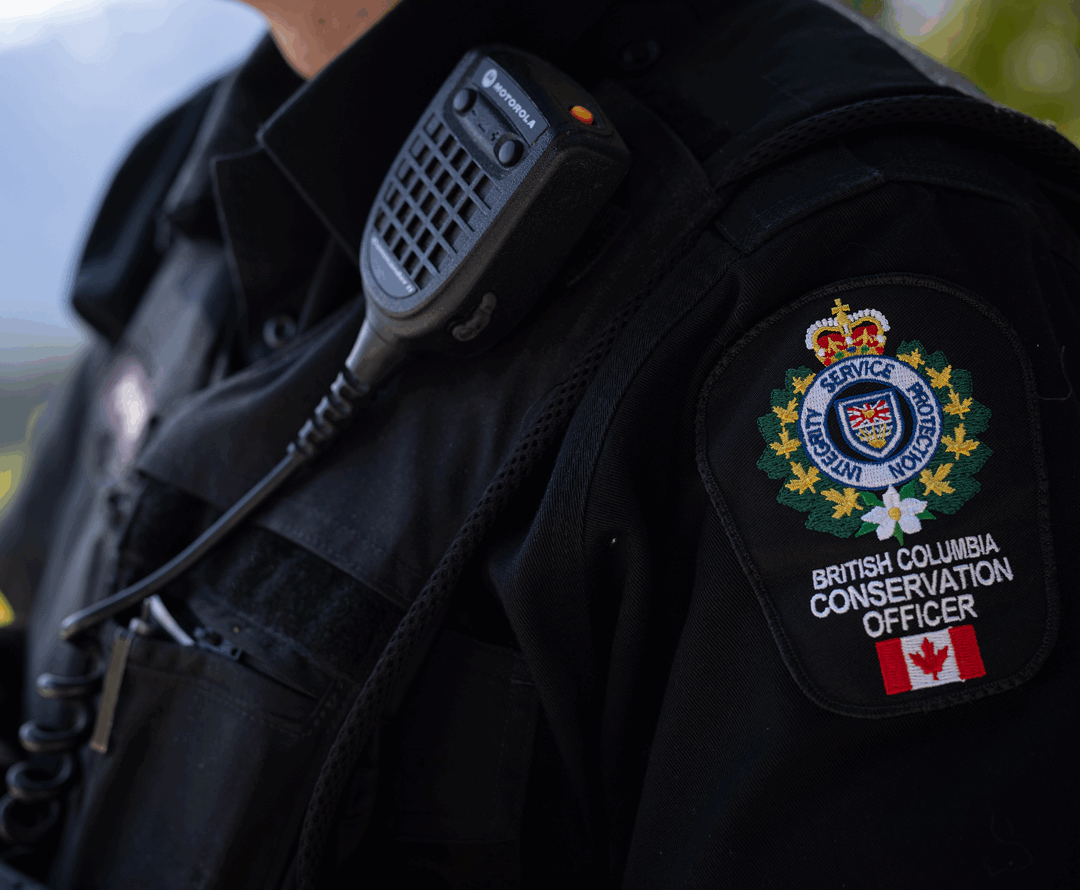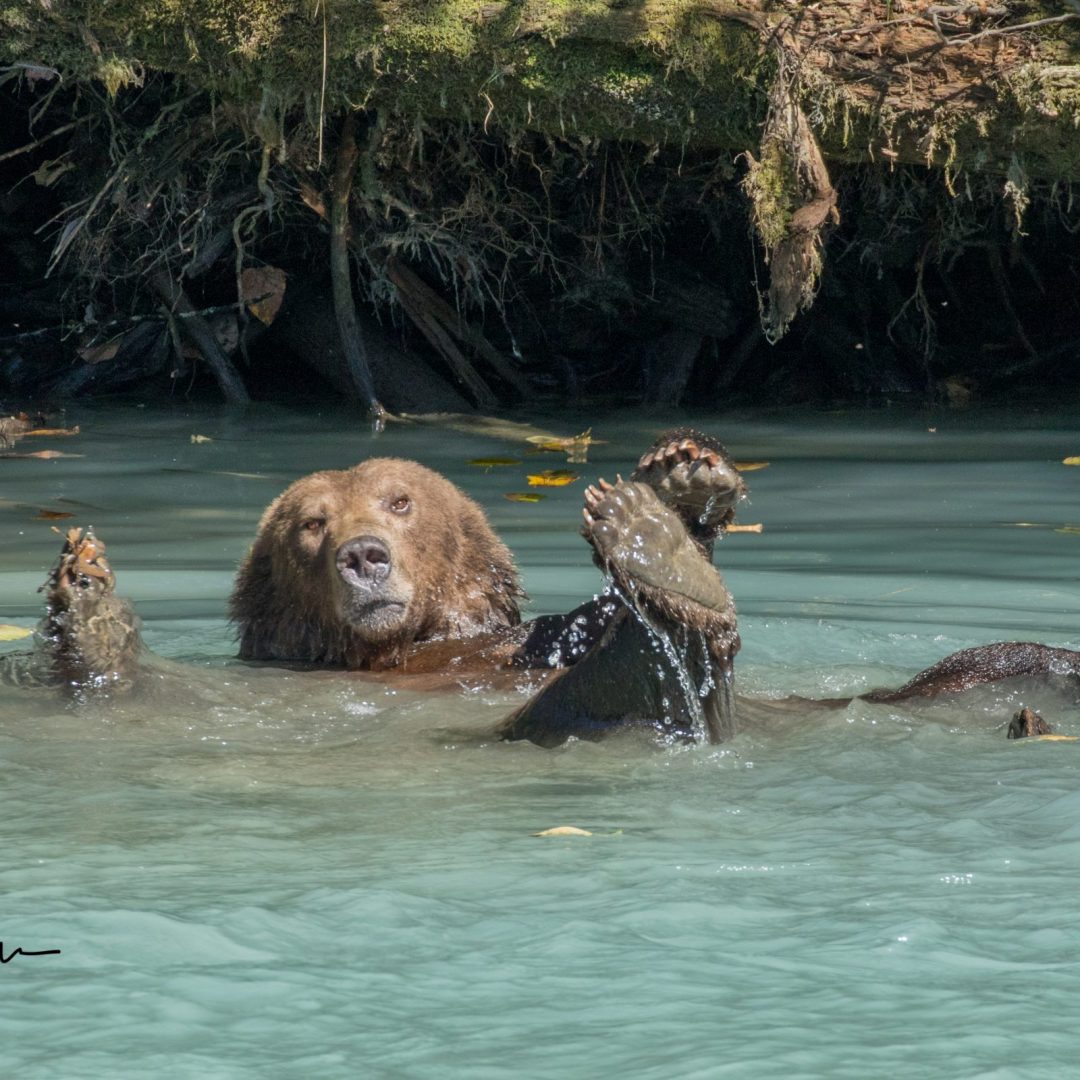

Meet Our 2024 Grant Recipients!
Bella Coola Valley Sustainable Agricultural Society
Location: Bella Coola Valley & Nuxalk Territory
Project: Community Harvest Gleaning Program
Since 2004, Bella Coola Valley Sustainable Agricultural Society growing community resilience and conservation though their Community Harvest Gleaning Program. The program addresses a key cause of human-bear conflict: unharvested fruit trees. By connecting fruit tree owners with local gleaners, this program has prevented thousands of pounds of fruit from going to waste, increased local food access, and removed bear attractants from residential areas. In 2024 alone, over 7,000 pounds of fruit have been redirected into schools, food banks, and community organizations.
This innovative effort strengthens food security while promoting peaceful human-wildlife coexistence.



Chrysalis Ecological
Location: Smithers, BC
Project: Behaviour and Risk: Increasing the Success of Rewilding Programs for Bears

Chrysalis Ecological is a passionate organization committed to advancing large mammal research across Canada. Their mission is to deliver high-quality, evidence-based research to support wildlife management and planning—offered at low or no cost to agencies and organizations in need.
With a history of contributing to wildlife management plans and policy suggestions, Chrysalis Ecological is now turning its focus to rewilding programs, which play a vital role in conservation by helping to restore populations, preserve genetic diversity. Their latest project is tackling an exciting question in wildlife science: how does bear personality influence survival and success in the wild? This project has the ability to guide decisions regarding policies on rewilding, translocation, conflict mitigation and responses, and habitat planning.
By advancing evidence-based conservation strategies, Chrysalis is helping shape a future where humans and bears can thrive together.
Grizzly Bear Foundation
Location: British Columbia
Project: A New Approach to Bear Encounters for Conservation Officers in British Columbia
The Grizzly Bear Foundation is developing a new framework for how Conservation Officers respond to bear encounters. Their initiative aims to:
- Enhance the well-being of grizzly and black bears
- Reduce the number of bear deaths due to human-bear conflicts
- Improve public understanding of coexistence practices
With support from this grant, they will conduct critical next steps, including focus groups, gather expert recommendations, and create a detailed implementation strategy. This work is poised to influence bear-related policy and response protocols across British Columbia, leading to safer, more effective management of human-bear interactions.


Knight Inlet Lodge
Location: Glendale Cove, Da’naxda’xw/Awaetlala First Nation Territory
Project: Grizzly Bear Body Condition Monitoring


Knight Inlet Lodge has been a leader in grizzly bear research since the 1990s. Their latest project uses non-invasive camera traps to monitor bear health in relation to salmon availability. With data collected from 2021 to 2025, the research will assess how environmental changes affect grizzly body condition and inform future conservation decisions.
This long-term study helps ensure that wildlife management remains grounded in science and responsive to changing ecological conditions.
Wild Wise Society
Location: Vancouver Island, Traditional Territories of the T’Sou-ke Nation of the Coast Salish Peoples, Sc’ianew (Beecher Bay) First Nation, Xwsepsum (Esquimalt), Lekwungen (Songhees) Peoples, as well as the Wei Wai Kum and Homalco First Nations.
Project: Community Education on Human-Bear Coexistence
Wild Wise is a volunteer-run educational initiative dedicated to reducing human-wildlife conflicts in several Vancouver Island communities. Through social media outreach, local media, educational signage, door-to-door communication, and a presence at community events, Wild Wise is making sure residents are aware of the small changes they can make—like securing attractants—that lead to positive impacts for both humans and bears!
With grant support, Wild Wise is expanding and enhancing their educational materials—including door hangers, pamphlets, and “Bear in Area” signage—to promote responsible practices from the public.


Sage Raymond – Wild Bear Lodge & University of Alberta
Location: Traditional Lands of the Ktunaxa, Sinixt, and Confederated Salish and Kootenai Tribes
Project: Investigating the role of scent-marking communication at marking trees used by interior grizzly bears.




Sage Raymond, a guide at Wild Bear Lodge and a University of Alberta scholar, is leading a collaborative research project exploring the fascinating world of scent-marking communication among interior grizzly bears in British Columbia. Scent-marking—an essential form of chemical communication for many wildlife species, especially large carnivores like grizzly and black bears—appears to play a crucial social role at specific “rub trees.” Using a combination of trail camera footage, field observations, and behavioral data from two grizzly bear populations, the research aims to uncover how bears in lower-density areas use these trees to communicate dominance, attract mates, and assess local risk—particularly among subadult grizzlies and black bears. This study will deepen our understanding of how bears of different species and age groups interact with their environment and each other throughout the year. By advancing knowledge in bear behavioral ecology, this work supports more informed land management and fosters greater public appreciation and conservation of these iconic animals.
Project Lead: Sage Raymond. Data Contributors: Wild Bear Lodge and Swan Valley Connections.
Red Deer Polytechnic
Location: British Columbia
Project: Large-scale Genetic Connectivity for Black Bears in British Columbia
This innovative research is creating the first-ever, evidence-based map of wildlife corridors for black bears across the province—an essential step toward ensuring their long-term survival in landscapes increasingly altered by human activity. With over 500 bear tissue samples collected so far, the team is using advanced genetic tools to define distinct bear populations across B.C. They are also mapping likely movement corridors using habitat suitability models, while identifying barriers such as roads, logging activity, and areas of human conflict. To confirm that these corridors truly support bear movement, researchers are analyzing gene flow to connect genetic distance with landscape resistance. This marks the first large-scale, science-driven approach to corridor identification and is also being conducted in Alberta and Saskatchewan. Ultimately, the findings will help guide land acquisition, conservation planning, habitat restoration, and coexistence strategies across key wildlife corridors.


Nanwakolas Council Society
Location: Northern Vancouver Island, Central Coast – Located on the traditional territories of the Da’naxda’xw-Awaetlala, K’ómoks, Mamalilikulla, Tlowitsis, Wei Wai Kum, and We Wai Kai First Nations
Project: Developing non-invasive conservation technology to monitor grizzly bears




We’re proud to support Nanwakolas Council Society and Guardians from K’ómoks, Mamalilikulla, Tlowitsis, Wei Wai Kum, and We Wai Kai First Nations working in their respective territories; in their groundbreaking work to protect grizzly bears through non-invasive technology and Indigenous stewardship. With support from a small grant, they are combining Indigenous knowledge and ecological science to track individual grizzlies through facial recognition software (BearID) and a network of camera traps across 1,000 km². This work supports land-use planning, identifies key habitat areas for conservation, and builds long-term capacity by training Indigenous Guardians in wildlife monitoring and bear ecology.
These projects demonstrate the power of small grants to catalyze meaningful change. From community-driven food systems to groundbreaking research, we’re proud to support each of these recipients in their efforts to protect bears and build more sustainable futures for them!


Donate to the Commercial Bear Viewing Association
If you’d like to do more, consider donating money to the Commercial Bear Viewing Association. You can earmark your donation specifically for research or conservation and you can be assured that we will make your donation make a difference for bears in British Columbia.
